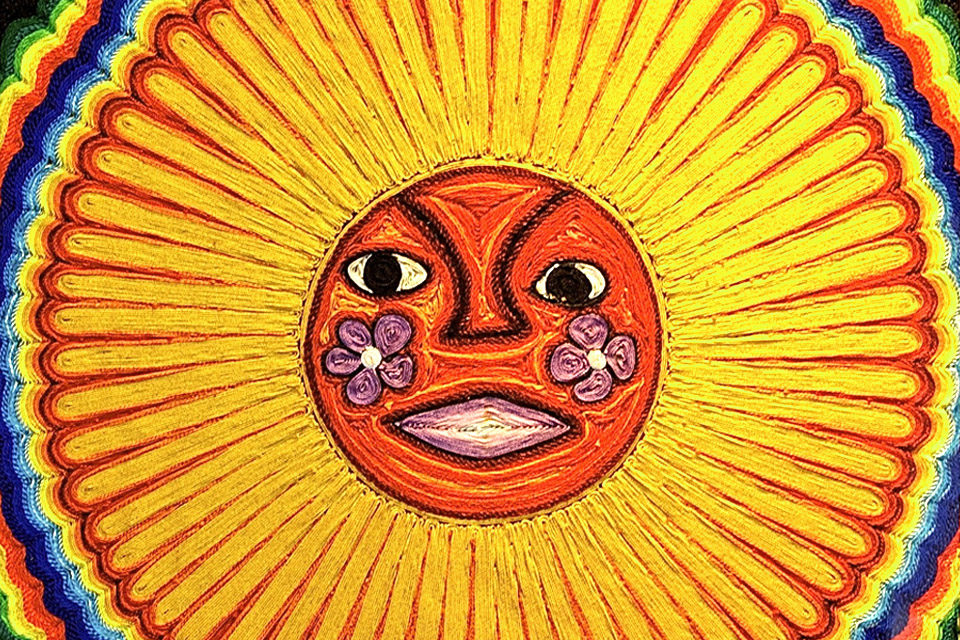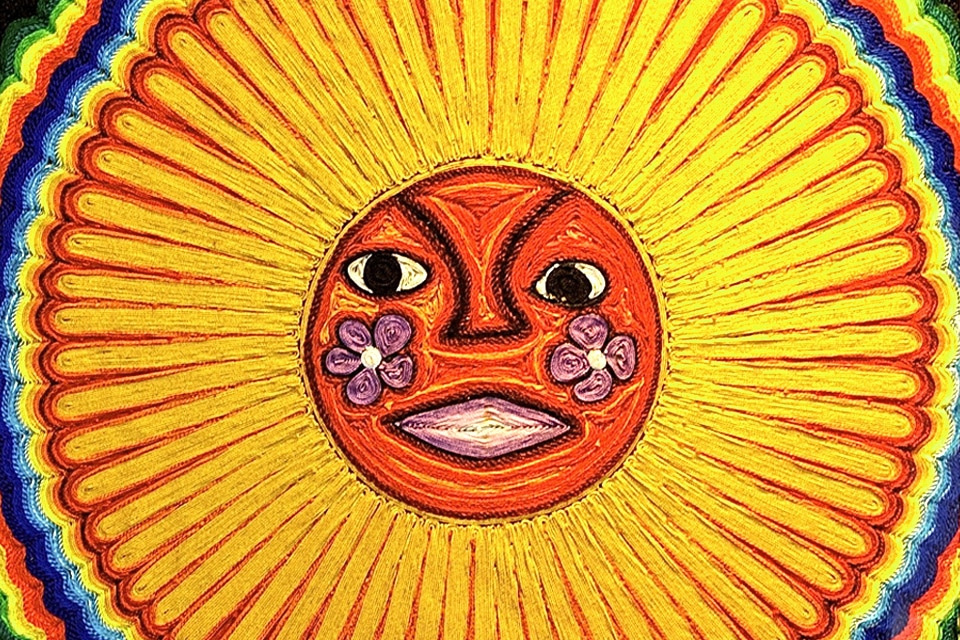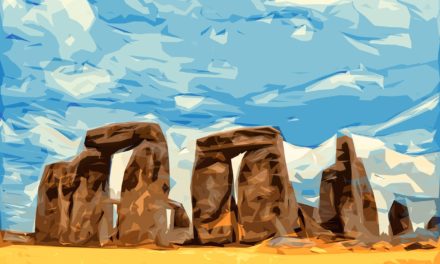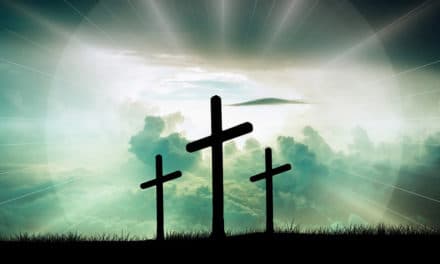In our final conversation with Mario Gómez Mayorga, founder of Con Ciencia Indígena, we delve into his decades of experience learning from the Huichol tribe about their plant medicine traditions, particularly as they relate to the peyote cactus, which is central to their identity. As you read about their relationship with the peyote plant, I invite you to be cognizant of how vastly different our Western culture is from their 4,000-year-old indigenous practices, and to suspend any judgment of their traditions from our diametrically-different cultural standpoint.
For more background on Mario and Con Ciencia Indígena, read our first interview with him here, and to hear him speak about protecting native cultures, read our second interview here.
Thanks so much for speaking with us again, Mario. You’ve spent a lot of time with the Huichol tribe. Can you tell us what role sacred plants play in their culture?
These sacred plants are so important to these people that they have their identity thanks to these plants. It’s not that they are helpers, or medicine or just one more herb- no, it’s that they became who they are thanks to being in relationship with these plants. There is something alive in these plants: there is an entity living in there; they have created cultures. Speaking more broadly, I suspect that we humans are civilized because of ingesting sacred plants in the past. I think all the revolutionary, creative ideas that gave birth to civilization were likely triggered by ingesting strange plants, many probably found by accident. I suspect they have a lot more to do with civilization than we realize.
I agree that very well may be true. You’ve intimated that the Huichol are a culture saturated by peyote. I’m curious- how often do they engage in consuming peyote? Is it a weekly thing, a daily thing?
I think it’s a permanent thing. They have this thing called “the hunt,” a yearly pilgrimage to the desert where they collect it. They call it the hunt because… well, I’ll try to make a long story short here, but there was a drought 4,000 years ago where everything was dying. All the plants, all the animals, everything was dying because of this gigantic drought. And in the middle of this severe drought a huge white deer appeared to them, a strong animal. Not thirsty, not weak. For them of course, this meant food and water. So the warriors took up their bows and arrows and hunted this animal. They followed it, and the animal keeps running and running. They chase it for days and days, and finally they arrive to the desert, which is 680 km away from their home. How do you do this almost dying of thirst? Well, survival, you know? Or perhaps it is just a myth, a legend… I don’t know.
And then this deer, instead of running further, faces them. They shoot two arrows into its heart and the animal falls dead, but when they arrive to the body of the animal, they find the arrows are in… yeah, it was the shape of a deer, but it was not a deer- it was peyote. A big spot of hundreds of peyotes. And they go “Wow, what is this?” So the myth says that they ate the “deer” and they collected the rest of the “deer” to take it back home. And they gave the “deer” to everyone there, and they were able to survive until it rained again. They didn’t die because of the deer. This is the moment the Huichol culture began, actually.
See how ingrained this thing is? They are forever thankful with this entity that is the “deer,” the peyote. For them it is like a god that appeared to save them, and every year they mimic that original pilgrimage. They walk all the miles, fasting with very little food and water to remember what it was like to be nearly dying of thirst and hunger, and they arrive there. So that’s why when they collect the peyote they call it hunting. And when they find little peyotes on the ground- one here, one there- they say it’s the footprints of the deer; he passed by there. And eventually they find a large spot, and when they find it they make a circle with the whole group and the elder who is leading the group takes a bow and arrow and shoots in the middle of the peyote, to remember the deer. And then they collect it. Each year when they do this, they collect a LOT of “deer” to take back home.
Through my many years with them, accepting their invitations, I saw how they take this cacti. When a woman gives birth, she eats peyote. When they are going to bury somebody, they eat peyote. When they are going to welcome the corn crop they eat peyote, and when they harvest the crop they eat peyote. When they are going to eat peyote, they eat peyote- it’s all the time! They have celebrations for something almost every day. So these people they live very high; it’s an everyday thing. You see mothers in ceremonies where everybody is really high on peyote and the mother too is breastfeeding her baby. And the elder will come and with his finger he stick in the baby a big chunk of peyote. This is who they are, like human peyotes, or ambassadors to the peyote plant. It’s all the time.
Wow.
Sometimes, for example, when they want rain to come again, they have this dance. They LOVE to dance. They prepare these gigantic containers with peyote juice and they have this gourd to pass, and so you drink peyote, and you dance, and you drink peyote, and you dance, and more and more. They are dancing nonstop for three days. And the crazy thing is- and this sounds like stories, but it’s true- these people with that dance, they provoke the rain season to begin. When their dance finishes the third day it’s because its raining, no need to dance anymore! I thought it was just a story- the first time I saw this, I thought “Ah, coincidence!” The second time I saw this, I say, “Hmm, strange coincidence again.” And then when I saw this several other times, I understood that these people somehow provoke the rain to happen.
Wow.
Yeah.
That’s amazing…
And other indigenous groups do that as well in North America.
Yeah, I’ve been involved in one, and saw it first hand also. The mind tries to rationalize it as a coincidence, but… there it is. It seems to me to be related to the conversation with the fire you spoke about earlier- this is somehow a somatic conversation with the elements.
Exactly, it’s a natural force.
Hearing this story, I’m reminded of just how different the Huichol culture is from our modern Western culture. Clearly what works for the Huichol would not be a good practice for a westerner today.
A lot of people ask me about plant medicines, and this is something that I’m very careful about. When people come to me and ask for tripping or for bringing these experiences, I’m not really open to that. First I have to know the person very well. I need to know who they are, their background, if they have had mental problems in the past, if they have taken psychiatric meds at some point in their life… I have a big questionnaire. I only accept people for these experiences who have worked with me for some time, at least a year, because some people can become damaged if they are not ready. Some people are weak and not able to deal with the experience. When we go there, we don’t play to get a little bit high, we do it like we learned from the indigenous people: their idea is to knock your head off, to really lose control so that you will be able to figure out who you are without your ego driving the machine. When you collapse the mental structure of who you think you are, you get to know who you actually are. Because we approach this in a very serious and strong way, I’m very careful to accept people.
With people I always get the question: “Will you recommend me to do it?” I cannot recommend you to do these things, but I cannot tell you don’t do them. I can only tell you, if you feel the pull, go for it- but please get informed, find somebody who you trust, find a place that is safe, and know that there is some inherent risk. It might be very beneficial, or you might go to hell and never come back. The first time you have no idea what’s going to happen to you, so you have to be brave and accept that anything could happen. If you dont feel really sure about it, you still feel afraid and have doubts, better not to do it. I’m very, very careful, and I don’t promote it.
That sounds like a very grounded way to approach this kind of deep and intense work. Mario, it’s been such a pleasure speaking with you. Do you have any final thoughts you’d like to share with those who are interested in the kind of wisdom sharing that you provide?
Some people have it within themselves to go on this quest of self-discovery alone, but many people feel the need for somebody to help them take their first steps. When people come to me, I give them everything that I have if they want it, if they are willing to get through all the material, tools, and techniques. But I tell them: I don’t want to see you here too long. I just want you to be self-sufficient, and once that you can walk, please run, and get out of here. I don’t want to see you again. I mean, we can be friends, we can send each other mails, but I do not want to be working with you at every workshop. I’m not going to share “one more secret,” I’m not like that. I give everything to people and I hope with all my heart they will go and live powerfully, deeply, consciously, lucidly. If you can do it by yourself, explore, read, research, try- you can do it. But if you feel you need a little bit of guidance, I am happy to help you. I’ve been doing it for half of my life, and I love to do it.
As a closing point, I can say that the experience to exist, just to be here in the present, is something that we don’t really realize how incredible it is. We have the fantastic gift to become aware of things, to suddenly understand things in this incredible world full of fantastic beauty and opportunities. I think it’s very important to be concerned with waking up from this dream of living day by day mechanically, to realize that each moment is unique and will never repeat again, and that we are invited to be created of our own life. We can decide what to do and what not to do, and this can trigger consequences. It’s incredibly beautiful to become the owner of your life, and with the help of life, you are invited to continue manifesting your own possibilities.
I think that is the most important because one of the gigantic parts of the Toltec knowledge is that we are mortal beings. It’s a taboo subject- people don’t ever want to think that we are going to die because it’s a bit freaky, a bit scary. But the fact is, no matter what we do, we are going to die. So therefore if it were not for the beauty of dying, all this would be so boring, so useless, so tasteless, so without reason. The fact that our time here is limited is exactly what makes it a jewel. Every second. Every minute. When you awaken your consciousness of being a mortal, you know there is no time to waste, there is no time to sit down and be bored forever, watching TV until you are drunk of tiredness. We are in the magnificence of existence and we can grow, we can understand, we can become lucid.
So my invitation to people would be to get curious about who they really are, and to explore it as much as possible. Make out of this very brief existence a fantastic ride. We can have the party of our lifetime inside ourselves, just by being aware. Awakening curiosity for this is fundamental in life, for you to really drink it all in, to the last drop.
We are very grateful to Mario for taking the time to share so many fascinating ideas, stories and experiences with us. For more background on Mario and Con Ciencia Indígena, read our first interview with him here, and to hear him speak about protecting native cultures, read our second interview here.











